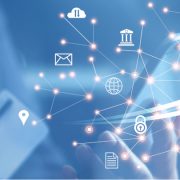“To be alive at all involves some risk” -Harold Macmillan
In an ever-changing world, volatility and uncertainty have become the only constant. Any quest for attaining order or stability (be it for a system, a community, or an individual), which doesn’t acknowledge the risk and challenges involved is almost bound to fail. When technological change, the development of new models and our understanding of the world around us is dynamic and changing every minute, it would be safe to assume that we are living in a world more complex than it has ever been. The continuous disruptions from competing businesses or sudden surges of totally unforeseen crises (economic, social, political, or ecological) due to non-sustainable ventures, have not only impacted the entrepreneurial landscape, but also every aspect of life. Consequently, the risk involved in undertaking any major endeavour or life event (where decision-making involves high stakes) has increased significantly. The upheaval created by the pandemic has been severe, to say the least.
The disruptions created have been widespread, spanning across continents, industries, and businesses. While the economic recovery is underway, the long-term effects of the pandemic are still being studied. Not only on the economy but also public health, mental well-being, communities and social structures as well as political and ecological systems. With the threat of successive waves being foretold, the risks and uncertainties are expected to soar. The sudden transition to fully digital and remote ways of operation has been haphazard and has contributed towards the widening of the gap between the privileged and the disadvantaged. Those who had easy access to technology and were digitally literate could stay afloat, while those who did not, found themselves more disadvantaged than they were before. Likewise, while ICT-based industries have experienced growth, many others are struggling for mere survival and people are suffering the loss of livelihoods. The healthcare and infrastructure sectors, on the other hand, are dealing with pressures for rapid up-scaling. Many industries are in the process of radically restructuring their strategies and models to focus on a speedy recovery and building resilience.
It is an opportunity to rebuild our foundations while redefining flexibility and robustness. Given all this, risk literacy can become the key to unlocking the capabilities required for the future. Risk literacy is the capability of an individual to stay aware of, acknowledge, assess and recognise the various probable and context-specific risks in a real, dynamic and complex scenario with superior decision-making. It is not just awareness of risks but an ability to deal with them. The suffix ‘literacy’ itself suggests the importance of the ability, as it is fundamental to effective decision-making. Not only does it require a mind for numbers (ability to compute and compare alternatives statistically), and an understanding of heuristics (when and how to use it and how to determine biases), but it also needs a balance between analytics and emotions, data and intuition. From leaders and executives to entry-level employees, decision-making constitutes an indispensable part of one’s job. Being Risk literate in the organisational context thus provides a competitive advantage and agility, fostering an ecosystem where ideas are put to the test without fear. Specifically for individuals carving a career path, risk literacy could be a vital skill to own and hone.
The WEF’s Future of Jobs Report 2020 acknowledges the digital divide and the widening skill gap. It also identifies the critical trend of digital upskilling, requiring aspirants to continue updating their skills to ensure survival. The pandemic has further amplified complications and risks of unemployment, work stress, safety and disturbed work-life balance in remote work settings.
Apart from individual efforts, higher education institutions and business organisations too can play a crucial role in imparting and promoting risk literacy. The goal should be to aid an individual in becoming ‘Risk Savvy’, a term used by German psychologist Gerd Gigerenzer. He is a proponent of the balanced use of heuristics and analytics through careful observation of the environment when dealing with risks. According to Gigerenzer, the nature of the approach should align with the nature of the risk. So, when the risks involved in a situation or the alternatives to a decision-making problem can be weighed, the use of statistical models is effective. But when the risks are unknown, and sudden, and decisions are to be made in a jiffy, heuristics are instrumental. Risk-literate individuals understand the types and nature of risk. They can differentiate between relative and absolute risks and are also aware of the common biases of human judgment. Knowledge of detailed risk behaviours is crucial for risk-savvy individuals. Behaviours associated with risks can be irrational and thus require attention to ensure effective risk mitigation. For instance, despite billions being spent on cancer diagnosis and treatment, smoking remains one of the major causes of oral cancer. But still, smokers fear death or health risk from other relatively low probability events but not smoking carries a high probability of developing cancer. The WEF report also highlights the job roles that are going to be in demand. These roles are primarily analytical – like data analyst, digital transformation specialist, strategic advisor, management analyst, OD practitioner and risk management specialist. The shift from risk aversion to embracing and dealing with risks to one’s advantage is a valued skill for future jobs.
Download the IRM-AICTE Report on Enterprise Risk Management and the Indian Higher Education System
Blog Author: Prof. Himanshu Rai, IIM Indore














